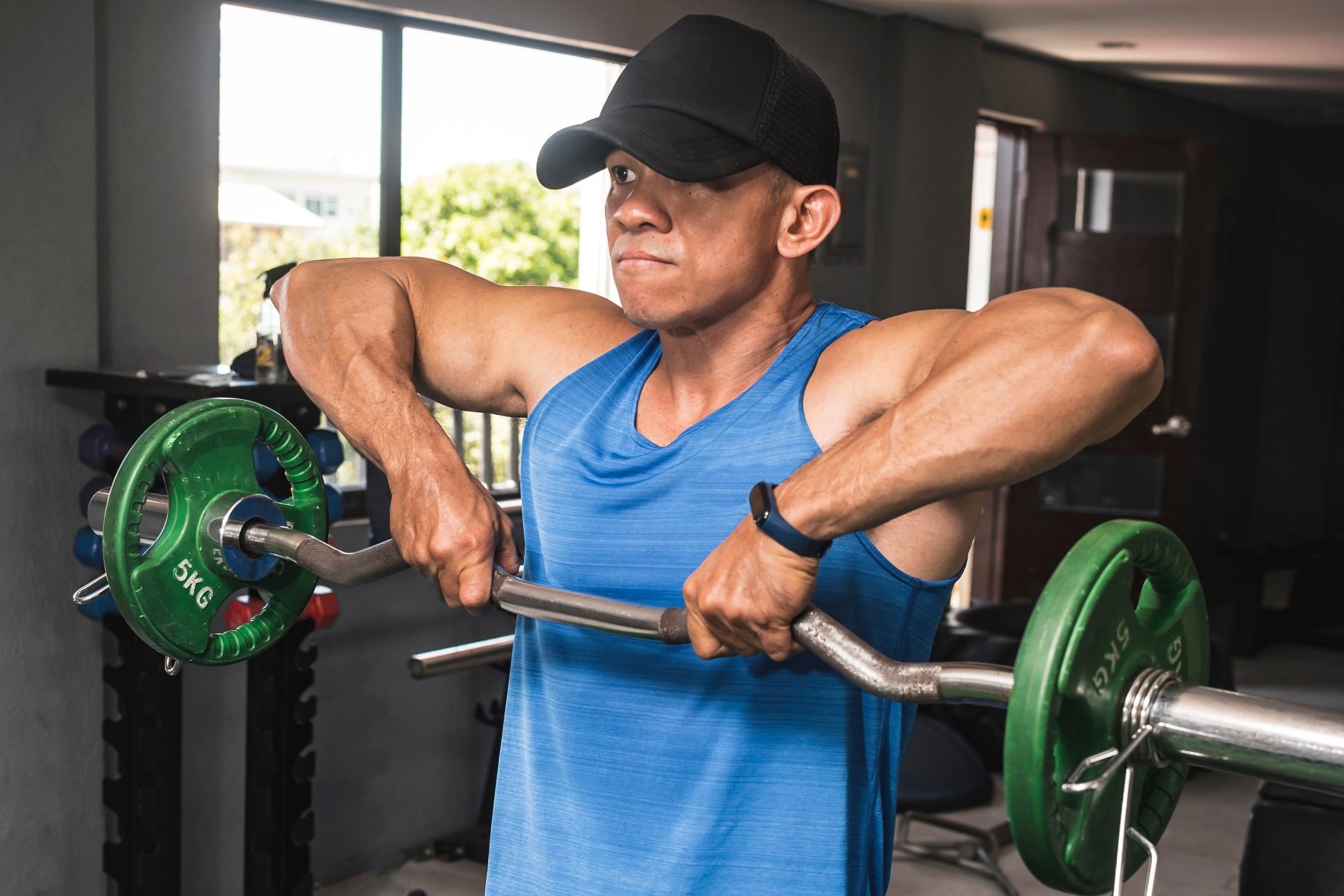
When you want to bulk up your shoulders and upper back, the upright row is an effective exercise. It’s important you understand how to properly and safely perform an upright row. Without proper form, you won’t be able to achieve optimal results, and you risk injury to your shoulders. Most athletes and professional trainers consider this an advanced exercise and caution that it isn’t suitable for everyone.
You can incorporate upright rows into your upper body or shoulder training days; all you need is a barbell, kettlebell, or a pair of dumbbells. Alternatively, you can perform other variations of the upright row using a cable machine or resistance bands.
What muscles does the upright row target?

The upright row is a superior choice for strengthening the shoulder muscles, particularly the side deltoids. This exercise targets the front and middle heads of the deltoid muscles, which wrap around your shoulders and help you move your arm to the front, side, and back behind you. The upright row is popular among bodybuilders looking to target specific muscles like the deltoids.
This exercise also targets your trapezius and rhomboid muscles in your middle and upper back. Your rhomboid muscles help pull your shoulder blades together and stabilize your shoulders.
If you’re a fan of bulging biceps, the upright row also works those important biceps muscles in the front of your upper arm. You’ll also engage your core when standing up.
What are the benefits of the upright row?

There’s a good reason why renowned bodybuilders like Arnold Schwarzenegger included this exercise in their workout routines. Research reveals the upright row can be part of an effective strength training routine, including as a workout for career firefighters. This pulling exercise involves pulling the weight toward you, which predominantly targets the muscles on the backside of your body.
The classic upright row works the pulling and lifting muscles that you use for everyday activities like lifting and carrying grocery bags, pulling the door open, or pulling your pants on while getting dressed.
How to do an upright row

The upright row is true to its name because you stand straight upright and lift a barbell to your upper chest. The weight should be close to your torso. You’ll need a barbell, kettlebell, or a pair of dumbbells.
How to perform an upright row:
- Stand with your feet about shoulder-width apart.
- Let your arms hang down. With your palms facing your body, grip the barbell in front of your body with an overhand grip.
- Brace your abdominals, engage your core, and lift the barbell up to your chin. Try to keep the barbell close to your body.
- Pause for a moment at the top of the movement.
- Carefully lower the barbell back to the starting position.
- Repeat for your desired number of reps.
How can an upright row lead to injury?

Upright row can lead to a shoulder injury due to internal rotation, overexertion, and improper form. When your elbows go up higher than your shoulders, the bar tugs at your shoulder joint, and this internal rotation can reduce the space between the head of your upper arm bone, called your humerus, and the other bones in your shoulder. The bones can begin rubbing against or pinching rotator cuff tendons and soft tissue. This is especially problematic if you’re using heavier weights.
The best ways to lower your risk of shoulder injury include:
- Having proper form
- Ensuring your elbows don’t come up above your shoulders
- Avoiding overexerting yourself and using weights that are too heavy
- Lowering the weight down with control and at a steady pace
Tips for proper form

Here are some top tips for improving your form, lowering your risk of injury, and boosting your results.
- Be sure to warm up before any weightlifting exercise.
- Make sure your elbows don’t go above your shoulders (stop at the top of the movement when your elbows reach shoulder level)
- Keep your core engaged and your torso upright.
- Draw your shoulder blades back as you lift the bar.
- Choose a weight that you can perform 10 to 30 repetitions with
- Try to avoid using an excessively heavy weight.
- Try to avoid lowering the weight down too fast.
Some people might find that a wavy EZ curl bar makes this exercise slightly easier on the wrist joints because you can grip the wavy bar at slight angles.
When it comes to the upright row, correct form is crucial to lower your risk of injury and safely reap the benefits.



